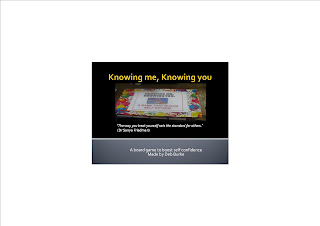Over the last six weeks I have investigated many different e-learning tools and how they can be incorporated into the classroom to assist students in their learning journey. I have analysed all of the technologies with respect to the conceptual frameworks and learning theories outlined in our learning environment. Initially I found the sheer volume of work rather intimidating, but looking back, I can see just how far I have come in my learning journey. Following fellow e-learners blog postings was initially a great way to stay abreast of everyone’s experiences. But then it became impossible to keep track of them all. There is a huge amount of people undertaking this course. But I did find the opinions and thoughts of peers invaluable when evaluating new information and the collaborative element in blogging made me feel that I was on the right path.
Another aspect I have come to see is that technology is ever changing and there are always new and exciting applications out there and we cannot hope to be on top of it all. As future teachers the trick is to know the technology we choose to use in our classroom well enough to use it to its full potential. The best way to engage the learner of the 21st century is to develop our knowledge base of Web 2.0 technologies. According to (Kearsley and Shneiderman, 1999) students, who are interested and engaged in their learning, are far less likely to cause problems. And problem behavior is a major issue in our schools today.
As stated by (Prensky, 2001) a huge fundamentally change has taken place, the arrival of the digital age and there is absolutely no going back. Today’s student is growing up surrounded by and immersed in technology but our classrooms are still catering to industrial age learners and these digital natives come to school and have to power down or put differently fight boredom until they can get back to their videogames, mp3 players and mobile phones and power up again.
According to (Prensky, 2001) students today think and process information fundamentally differently from their predecessors. As a digital immigrant I have a huge responsibility to learn as much as I can about what is available so I am equipped to teach the digital natives that will be sitting in my classroom hoping to be engaged and this course is my first step in that direction.
(Seimens, 2004) Connectivism presents a model of learning that is no longer an internal, individualistic activity. How people work and function is altered when new tools are utilised. Education needs to catch up with the new learning tools and the environmental changes.
I envision using most of the ICT tools covered in this course, they all have a place in the modern classroom. I believe these tools will increase the efficiency and effectiveness of my teaching. One of my favourite learning tools I have analysed is the WebQuest. I believe it is the whole package so to speak. A WebQuest is an inquiry based online tool for learning. I will certainly be using WebQuests in my teaching to help build a solid foundation that prepares students for the future as they are based on the learning theories of inquiry and constructivism and incorporate cooperative and collaborative learning (Educational Broadcasting Corporation, 2004).
I will be bringing the power of wiki to my learning process. Wiki provides opportunities for teachers to post lessons and edit students work online, allowing more transparency to parents. Links to relevant websites, animations, presentations with audio, podcasts, assignments, Teachertube videos, links to quizzes, and interactive educational games all introduced with the aid of a Voki. These are just some of the ways to incorporate Wiki in the classroom as well as providing valuable feedback to my learners. This frees me up to coach and monitor my learners progress as they develop essential learning skills for this modern era. Having developed my skills in the use of some of the media/technologies, these materials can also be uploaded and accessed easily at any time. I feel I will be able to use them to make myself a more effective teacher.
My students will also be able to access lectures or summaries delivered through an audio file distributed online or offline in the form of a podcast which they can listen to whenever and wherever they get the opportunity. This will help them revise and understand new concepts at their own pace. Another very effective learning tool is the one we are being assessed on through this course, a Blog. They are as effective as a Wiki and can obviously accommodate all the same media technologies that a Wiki can.
I was certainly intimidated by the Blog technology initially but have found it to be a most enjoyable and informative learning journey. A large part of my learning journey has been following fellow e-learners blogs and the Google RSS reader certainly made this task more manageable.
I have left comments on;
Anita’s Voki Blog:
http://anita-e-learning.blogspot.com/2009/08/voki-avatars.html
Jess’s WebQuest Blog:
http://jess-uni-e-learning.blogspot.com/2009/08/web-quest.html
Kay’s Voicethread Blog:
http://kaysassessment.blogspot.com/2009/08/my-sons-horse.html
Kay's music in the classroom Blog:
http://kaysassessment.blogspot.com/2009/08/using-music-on-web.html .
Cheers
Deb
References:
Educational Broadcasting Corporation, (2004). Concept to Classroom, WebQuests. Retrieved on 21 August from:
http://www.thirteen.org/edonline/concept2class/webquests/index_sub7.html
Kearsley G., & Shneiderman B. (1999), Engagement Theory: A framework for technology-based teaching and learning. Retrieved on 21 August, 2009 from:
http://home.sprynet.com/~gkearsley/engage.htm
Prensky, M. (2001). Digital Natives, Digital Immigrants. Retrieved 19 August, 2009 from: http://www.marcprensky.com/writing/Prensky%20%20Digital%20Natives,%20Digital%20Immigrants%20-%20Part1.pdf
Siemens G. (2004). Connectivism: A Learning Theory for the Digital Age. Retrieved on 21August, 2009 from:
http://www.elearnspace.org/Articles/connectivism.htm












